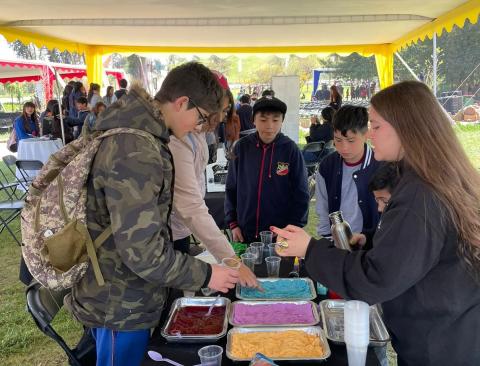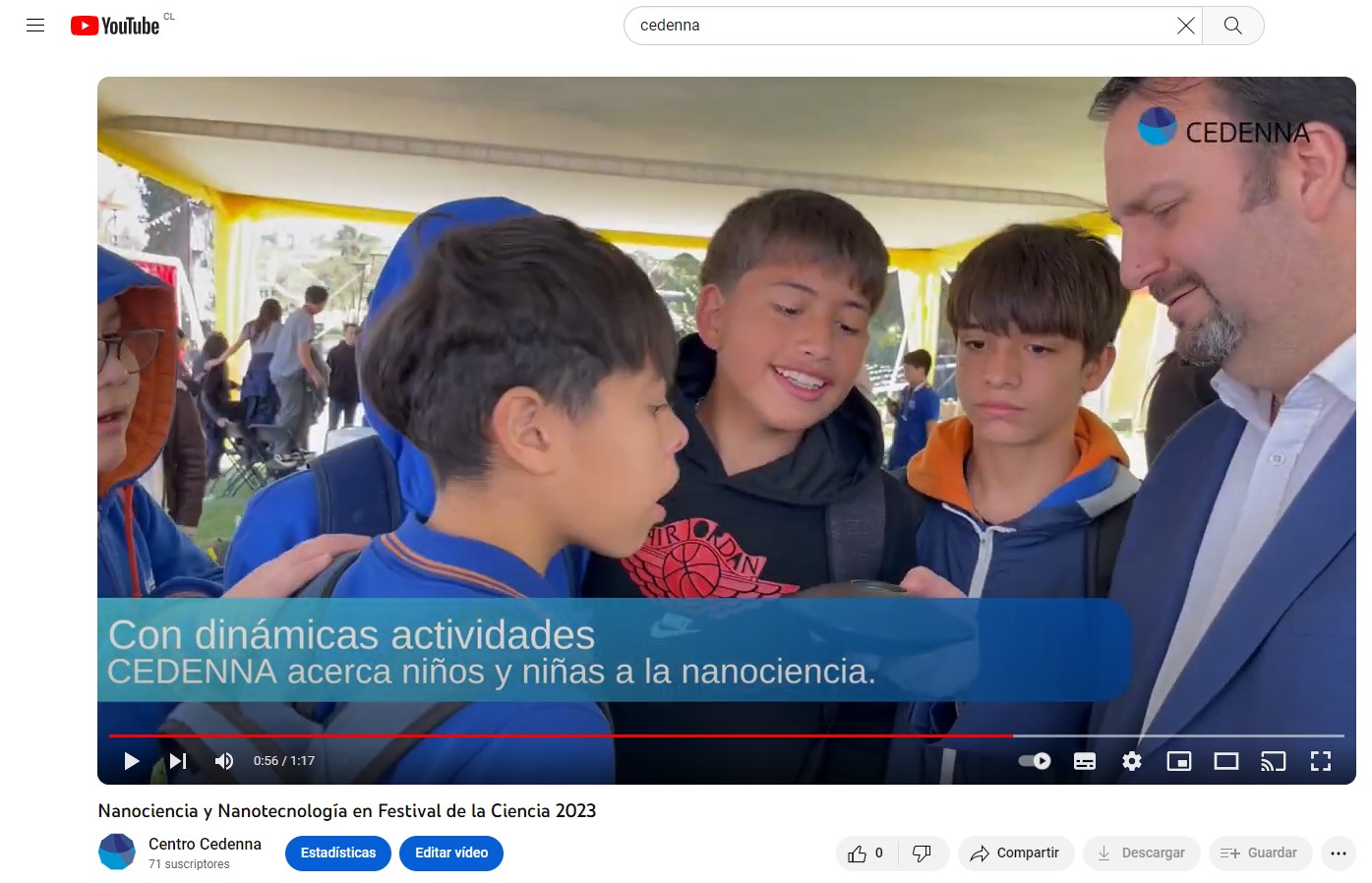
- On Saturday, October 7, visitors will be able to become scientists for a few minutes and make their own nanoparticles, at the stand of the Center for Nanoscience and Nanotechnology, CEDENNA.
With diverse and colorful experiences that include materials such as magic sands, balloons, aromas and microscopes, the stand of the Center for Nanoscience and Nanotechnology (CEDENNA) has aroused special interest among students who visit the "Futurists, the Circus of Science" mounted in the Pueblito de Las Vizcachas, within the framework of the different activities carried out within the framework of the 2023 Science Festival. This entertaining day, organized by the Ministry of Sciences and the Encuentros del Futuro Foundation (Futurists), will last until Sunday October 8th.
With these fun activities, this research center tries to bring nanoscience closer to visitors, so that through their senses they can understand the impact and effects that this discipline has in different fields, thanks to the changes that materials experience when working. on a nanometer scale.
“At our stand we have images of nanoparticles captured through CEDENNA electron microscopes, artistically approached by our researchers and students; We are also developing several recreational experiences focused on children being able to feel and touch what the nanoworld is with their hands. Things as simple as sand that when coated with a small, very thin layer of nanoparticles becomes hydrophobic, that is, it repels water and that is why it behaves absolutely different from ordinary sand,” said the executive director of the center. , Dr. Juan Escrig Murúa.
A CEDENNA researcher will be present at the stand every day to guide the children in their experiences and guide them through the nanoworld, as well as answer their questions. Among the scientists participating are Drs. Luis Costandil, Samuel Baltazar and Daniela Alburquenque, from the University of Santiago de Chile, along with Max Ramírez and José Rogan from the University of Chile.
MAKING NANOPARTICLES
On Saturday, October 7, between 10:00 a.m. and 1:30 p.m., Dr. Patricia Díaz, CEDENNA researcher, will be teaching visitors the usefulness and applications of albumin nanoparticles. But not only that, it will also guide them to make their own nanoparticles at the stand, with the materials and equipment available there, living the experience of becoming experienced scientists for a few minutes.
CEDENNA
The Nanoscience and Nanotechnology Center is one of the main research centers in Chile, of a multidisciplinary and inter-university nature, dedicated to the study, advancement and promotion of science in nanometric dimensions and its technological applications.
Founded in 2009, its corporate offices are located in the Research Centers Building of the University of Santiago de Chile, where some of its associated laboratories are also located.
The Center is made up of more than 70 doctors from various universities in the country, united in research groups focused on various topics. In addition, Cedenna has capabilities available in its more than 17 laboratories, which integrate chemical, physical and/or biological aspects, manufacturing and characterizing nanomaterials. It also has two units that are transversally related to the laboratories: the prototyping unit and the nanosafety unit, the latter aimed at studying the safety of materials on a nanometric scale, for their manipulation, use and subsequent commercialization.
Cedenna's work is aimed both at the development of cutting-edge knowledge and its application in technology based on nanoscale materials, offering solutions to the productive sector. One of its main objectives is also the formation of excellent human capital and the dissemination of nanoscience and nanotechnology, in the context of what has been called the fourth industrial revolution.
Check out the full video of the activity!
- Log in to post comments









